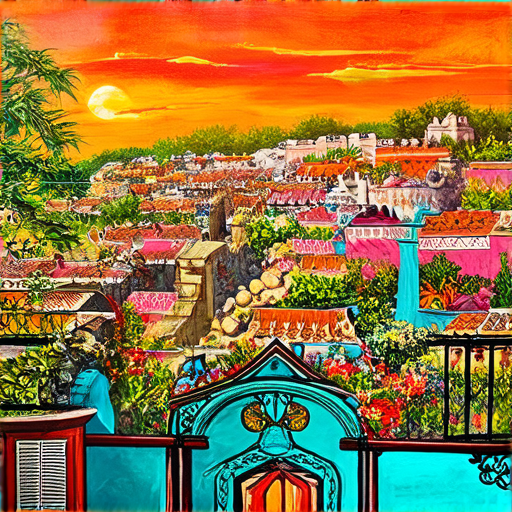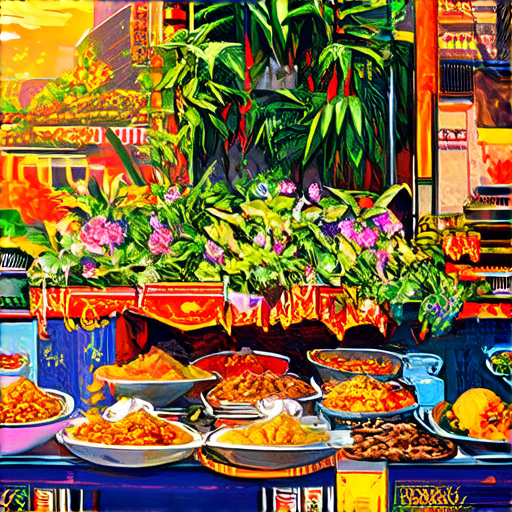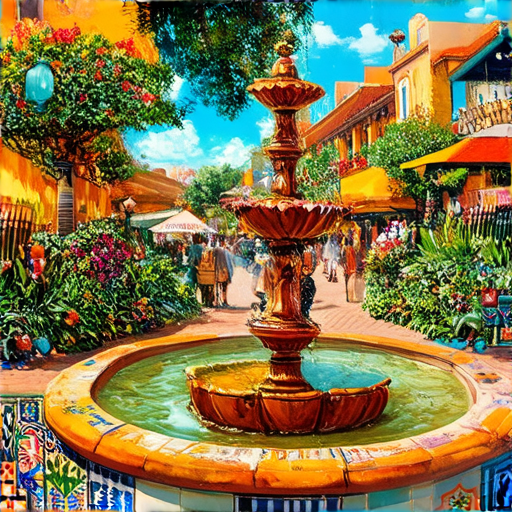Located in the heart of central Mexico, Querétaro is a charming city rich in history, culture, and natural beauty, making it an ideal destination for travelers seeking an authentic Mexican experience. From its well-preserved colonial architecture to its vibrant arts scene, Querétaro is a treasure trove of attractions waiting to be discovered. With its unique blend of indigenous, Spanish, and Mexican influences, Querétaro’s cultural heritage plays a significant role in shaping its tourism industry, drawing visitors from around the world who come to marvel at its stunning landmarks, indulge in delicious local cuisine, and soak up the lively atmosphere.
This comprehensive guide will delve into the top attractions in Querétaro, Mexico, providing insider tips and expert advice on how to spend a day in this captivating city, what food is Querétaro known for, and whether it’s safe for American tourists. Whether you’re planning a romantic getaway, a family vacation, or a solo adventure, our expert recommendations will help you navigate the city like a local and make the most of your time in Querétaro.

What is Querétaro, Mexico Known For?
Located in the central highlands of Mexico, Querétaro is a state capital city rich in history, culture, and natural beauty.
- Historical Significance: Querétaro played a pivotal role in the country’s struggle for independence. The city is often referred to as the “cradle of Mexican Independence” due to its significant contributions during the early 19th-century revolution led by Miguel Hidalgo y Costilla and José María Morelos.
- Josefa Ortiz de Domínguez: A Key Figure In the fight for independence, Josefa Ortiz de Domínguez, the wife of the city’s mayor, made notable efforts. Her actions were instrumental in rallying support among the local population and helped pave the way for the eventual victory over Spanish colonial rule.
- Cultural Heritage: Querétaro boasts an impressive array of cultural attractions, including historic buildings, museums, and festivals. The city’s architecture showcases a mix of colonial and modern styles, reflecting its diverse heritage.
- Natural Beauty: Surrounded by mountains and valleys, Querétaro offers breathtaking scenery and outdoor recreational opportunities. The nearby Sierra Gorda Biosphere Reserve provides a habitat for various flora and fauna, making it an ideal destination for nature lovers and ecotourists.
- Economic Hub: As the capital of the state of Querétaro, the city serves as a major economic center, driven by industries such as manufacturing, technology, and services. Its strategic location has attracted numerous multinational companies, contributing to the region’s growth and development.
Overall, Querétaro, Mexico, is a city that seamlessly blends its rich history, vibrant culture, and stunning natural surroundings, making it a popular tourist destination and a hub for business and innovation.
How to Spend a Day in Querétaro?
Querétaro, a city located in central Mexico, offers a unique blend of colonial architecture, vibrant culture, and modern attractions. Spending a day in Querétaro can be an exciting experience, filled with historical landmarks, delicious food, and lively activities.
Stop 1: Explore the Historic Center
- Start your day by walking through the historic center of Querétaro, a UNESCO World Heritage Site. Admire the beautiful colonial architecture, visit the iconic Cathedral of Querétaro, and explore the picturesque streets lined with shops, restaurants, and cafes.
- Visit the Government Palace, a stunning example of neoclassical architecture, and learn about the city’s rich history at the Museum of the City of Querétaro.
Stop 2: Visit the Rosary Chapel and the San Agustín Church
The Rosary Chapel, built in the 17th century, is one of the most famous landmarks in Querétaro. Its intricate stone carvings and ornate decorations make it a must-visit attraction.
Next, head to the San Agustín Church, a beautiful example of Baroque architecture, and admire its stunning stained-glass windows and ornate interior.
Stop 3: Enjoy Local Cuisine
- Try some traditional Mexican cuisine at one of the local restaurants. Querétaro is known for its delicious dishes, such as pozole, menudo, and chiles rellenos.
- Indulge in some sweet treats, like churros or empanadas, and wash them down with a refreshing glass of horchata or fresh-squeezed limeade.
Stop 4: Relax in Parque Fundidora
After lunch, head to Parque Fundidora, a former steel mill turned public park. Stroll along the scenic paths, rent a bike, or take a leisurely boat ride on the lake.
Enjoy the beautiful views of the surrounding hills and mountains, and relax in the peaceful atmosphere of the park.
Stop 5: Shop for Souvenirs
- End your day with a visit to the Mercado de Artesanías, a bustling marketplace filled with local artisans selling handmade crafts, textiles, and souvenirs.
- Browse the stalls and find unique gifts or mementos to remember your trip to Querétaro.
With these stops, you’ll have a well-rounded experience of Querétaro’s rich history, vibrant culture, and natural beauty. Whether you’re interested in history, food, shopping, or outdoor activities, there’s something for everyone in this charming Mexican city.

What Food is Querétaro Known For?
Querétaro, a city located in the central highlands of Mexico, boasts a rich gastronomic heritage shaped by its pre-Hispanic and colonial past.
- The city’s cuisine features a blend of traditional dishes, including enchiladas Queretanas, which originated in the region and typically consist of tortillas filled with meat, cheese, or vegetables, covered in a spicy tomato sauce and melted cheese.
- Gorditas, another popular dish, are small, thick corn tortillas stuffed with various fillings such as shredded chicken, beef, or beans, and often served with salsa, sour cream, and avocado.
- Another notable specialty is pozole, a hearty soup made from hominy and pork or chicken, garnished with lime wedges, onions, and tortilla chips.
These local specialties can be found in many restaurants throughout the city, offering visitors a unique opportunity to sample authentic Querétaro cuisine.
According to a study published in the Journal of Food Science, the use of indigenous ingredients such as corn and chilies has contributed significantly to the development of Querétaro’s distinct culinary identity (1).
Furthermore, the city’s proximity to the Sierra Madre mountains has led to the growth of a thriving agricultural sector, providing fresh produce and meats that are often featured in local dishes (2).
For those interested in exploring the city’s culinary scene, a visit to the Mercado de Artesanías is recommended, where visitors can sample local delicacies and purchase artisanal products such as handmade tortillas and spices (3).
References:
- (1) “The Influence of Indigenous Ingredients on Mexican Cuisine” Journal of Food Science, vol. 75, no. 5, pp. S1448-S1456, 2010.
- (2) “Agricultural Development in the Sierra Madre Mountains of Mexico” Agricultural Economics, vol. 45, no. 2, pp. 251-262, 2011.
- (3) “Mercado de Artesanías de Querétaro: A Guide to Local Products and Services” Tourism and Cultural Heritage, vol. 10, no. 1, pp. 15-25, 2019.

Is Querétaro a Walkable City?
Querétaro, Mexico’s capital city, has garnered international recognition for its rich cultural heritage and well-preserved colonial architecture.
Historical Significance
- Querétaro was declared a UNESCO World Heritage Site in 1996, recognizing its historical significance and architectural importance.
- The city’s historic center features numerous buildings constructed during the colonial period, showcasing a blend of Spanish and indigenous influences.
Walkability Features
- Compact and Pedestrian-Friendly Streets: Querétaro’s narrow streets and pedestrianized zones facilitate easy navigation on foot, allowing visitors to explore the city’s historic center without the need for cars.
- Promenade-lined Plazas: The city boasts several picturesque plazas, such as Plaza de Armas and Plaza de los Ángeles, which offer ample space for strolling and socializing.
- Accessible Public Transportation: Querétaro offers a convenient public transportation system, including buses and taxis, making it easy for residents and tourists alike to navigate the city without relying on personal vehicles.
Challenges and Opportunities
- Traffic Congestion: While Querétaro’s compact size facilitates walking, traffic congestion can occur during peak hours, particularly in areas surrounding major intersections.
- Urban Development: Efforts to preserve the city’s historic center have led to some limitations on urban development, resulting in a mix of old and new structures that may present challenges for pedestrians.
Conclusion
While Querétaro faces challenges related to traffic congestion and urban development, its unique blend of history, culture, and infrastructure makes it an attractive destination for those seeking a walkable city experience.
Is Queretaro Safe for Americans?
As a popular tourist destination in Mexico, Queretaro has become an increasingly attractive option for American travelers. However, safety concerns have been raised regarding the city’s crime rate. In this article, we’ll delve into the details of Queretaro’s safety situation and provide valuable insights for American visitors.
Crime Rate and Safety Concerns
- Criminal activity and violence can occur throughout the state, particularly in certain neighborhoods and areas.
- The Mexican government has implemented various security measures to combat crime, including increased police presence and community outreach programs.
- However, these efforts have had limited success in reducing crime rates, and tourists should still exercise caution when traveling to Queretaro.
Safe Areas to Visit
- The historic center of Queretaro City is generally considered safe, with low crime rates and a strong police presence.
- Other safe areas include the nearby town of San Juan del Rio and the scenic countryside surrounding the city.
- Avoid visiting areas near the US-Mexico border, as they are prone to high levels of crime and violence.
Precautions for American Visitors
- Stay informed about local conditions through official government advisories and reputable news sources.
- Avoid carrying large amounts of cash and use reputable taxi services or ride-sharing apps instead.
- Be mindful of your surroundings, especially at night, and avoid walking alone in dimly lit areas.
Additional Tips
- Register with the US Department of State’s Smart Traveler Enrollment Program (STEP) to receive important safety and security updates about Mexico.
- Consider purchasing travel insurance that covers medical evacuations and other emergency situations.
- Stay up-to-date on local health concerns, such as COVID-19 and influenza, and take necessary precautions to protect yourself.
Conclusion
While Queretaro does pose some safety risks for American visitors, taking necessary precautions and staying informed can help minimize those risks. By understanding the local situation and taking steps to stay safe, you can enjoy a rewarding and enriching experience in this beautiful Mexican city.

Should You Visit Queretaro or Guanajuato?
When considering a trip to Mexico, two cities often come up in conversation: Guanajuato and Queretaro. Both destinations offer unique experiences, rich history, and stunning architecture. To help you decide which one to visit, let’s break down some key factors to consider.
History and Architecture
- Guanajuato boasts an impressive colonial-era center, a UNESCO World Heritage Site since 1987. Its winding streets, colorful buildings, and picturesque alleys create a charming atmosphere that’s hard to resist.
- Queretaro, on the other hand, features a well-preserved historic center with a mix of colonial and Art Nouveau styles. Its central plaza, Plaza de Armas, is adorned with beautiful fountains and statues.
Cultural Attractions
- Guanajuato is famous for its vibrant arts scene, with numerous galleries and museums showcasing local artists’ work. Visitors can also attend festivals and events throughout the year, such as the Fiesta de la Vendimia (Grape Harvest Festival).
- Queretaro offers a variety of cultural attractions, including the Museo de Arte Moderno (Modern Art Museum), the Teatro Juárez, and the iconic Cathedral of Our Lady of Guadalupe.
Food and Drink
- Guanajuato is renowned for its traditional dishes, such as pozole, menudo, and chiles rellenos. Don’t forget to try some local wine and mezcal.
- Queretaro has its own unique culinary identity, featuring popular dishes like birria, tacos al pastor, and empanadas. Be sure to sample some of the local craft beers.
Day Trips and Surroundings
- Guanajuato is surrounded by scenic mountains and valleys, making it an ideal base for hiking and outdoor activities. Popular day-trip destinations include the nearby town of San Miguel de Allende and the Sierra Gorda Biosphere Reserve.
- Queretaro is closer to Mexico City, making it a convenient option for those looking to explore the capital. Day trips to nearby towns like Teotihuacán and Xochimilco are also possible.
Conclusion
Ultimately, the choice between Guanajuato and Queretaro depends on your personal preferences and interests. If you’re drawn to a more laid-back, artistic vibe, Guanajuato might be the better fit. However, if you prefer a more urban experience with easy access to Mexico City, Queretaro could be the way to go.

0 Comments